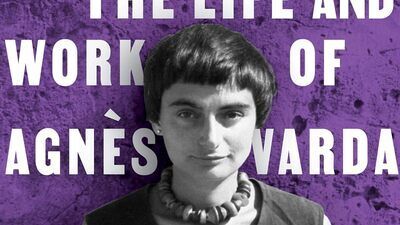When Varda approached Resnais for help, he asked to see her screenplay. Immediately she delivered one to him at his place on rue des Plantes, a fifteen- minute stroll from rue Daguerre. After reading it, the future director of the classic drama Hiroshima Mon Amour (1959) declined politely by letter. “Your research is too close to mine,” he wrote.
But Varda did not take no for an answer. By phone, she entreated Resnais to look at the rushes (unedited footage). Her persistence paid off. They met at the Éclair laboratory in Épinay- sur- Seine, north of Paris, where she could screen the footage free of charge. Given that she had ten hours of footage, Varda expected that Resnais, a laconic figure known affectionately as the Sphinx, would watch three or so. Varda sat four rows behind him in anxious silence.
About ninety minutes into the screening, where the only sounds were the dull buzz of the projector lamp and the metallic whirring of film reels, he stood up and announced, “I think I’ve seen enough.” Varda’s heart nearly stopped. The Sphinx strode to the door in silence. At six foot three, he towered over Varda. Before taking his leave, he said something to the effect that the rushes were very interesting, but that it was too big a job. “I won’t be able to do it,” he said politely. Varda recalled, “He left. I collapsed.”
Resnais surprised Varda with a call the next morning, offering friendly advice. “While I can’t do it, maybe I can help get you started,” he said. For the sake of determining continuity, he explained, “you need to number the rushes.” In the analog age, every foot of processed film had to be manually marked with scene number and take number. Resnais lent her two synchronizers, which track the length of a segment or reel of film, to help with the job. One had a crank, the other a toothed wheel; one crank advanced a foot of film at a time so the negative could be numbered in one- foot increments. Resnais explained that she should start at zero, crank once, and write the data at the frame’s edge. The first frame of scene 25, take one, should be 25– 1– 1. One foot later, 25– 1– 2, etc. For the second take, 25– 2– 1, 25– 2– 2, etc. He instructed her to buy white India ink and a pen with a fine nib. He indicated where to write the numbers. It was a foreign language, but she attended carefully to his tutorial. Soon she would be fluent.

